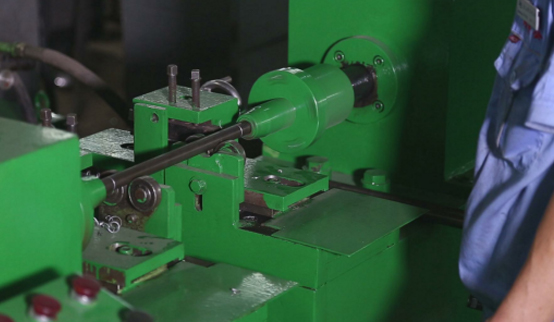 Afrikaans
Afrikaans  Albanian
Albanian  Amharic
Amharic  Arabic
Arabic  Armenian
Armenian  Azerbaijani
Azerbaijani  Basque
Basque  Belarusian
Belarusian  Bengali
Bengali  Bosnian
Bosnian  Bulgarian
Bulgarian  Catalan
Catalan  Cebuano
Cebuano  Corsican
Corsican  Croatian
Croatian  Czech
Czech  Danish
Danish  Dutch
Dutch  English
English  Esperanto
Esperanto  Estonian
Estonian  Finnish
Finnish  French
French  Frisian
Frisian  Galician
Galician  Georgian
Georgian  German
German  Greek
Greek  Gujarati
Gujarati  Haitian Creole
Haitian Creole  hausa
hausa  hawaiian
hawaiian  Hebrew
Hebrew  Hindi
Hindi  Miao
Miao  Hungarian
Hungarian  Icelandic
Icelandic  igbo
igbo  Indonesian
Indonesian  irish
irish  Italian
Italian  Japanese
Japanese  Javanese
Javanese  Kannada
Kannada  kazakh
kazakh  Khmer
Khmer  Rwandese
Rwandese  Korean
Korean  Kurdish
Kurdish  Kyrgyz
Kyrgyz  Lao
Lao  Latin
Latin  Latvian
Latvian  Lithuanian
Lithuanian  Luxembourgish
Luxembourgish  Macedonian
Macedonian  Malgashi
Malgashi  Malay
Malay  Malayalam
Malayalam  Maltese
Maltese  Maori
Maori  Marathi
Marathi  Mongolian
Mongolian  Myanmar
Myanmar  Nepali
Nepali  Norwegian
Norwegian  Norwegian
Norwegian  Occitan
Occitan  Pashto
Pashto  Persian
Persian  Polish
Polish  Portuguese
Portuguese  Punjabi
Punjabi  Romanian
Romanian  Russian
Russian  Samoan
Samoan  Scottish Gaelic
Scottish Gaelic  Serbian
Serbian  Sesotho
Sesotho  Shona
Shona  Sindhi
Sindhi  Sinhala
Sinhala  Slovak
Slovak  Slovenian
Slovenian  Somali
Somali  Spanish
Spanish  Sundanese
Sundanese  Swahili
Swahili  Swedish
Swedish  Tagalog
Tagalog  Tajik
Tajik  Tamil
Tamil  Tatar
Tatar  Telugu
Telugu  Thai
Thai  Turkish
Turkish  Turkmen
Turkmen  Ukrainian
Ukrainian  Urdu
Urdu  Uighur
Uighur  Uzbek
Uzbek  Vietnamese
Vietnamese  Welsh
Welsh  Bantu
Bantu  Yiddish
Yiddish  Yoruba
Yoruba  Zulu
Zulu Improving Roller Lagging Efficiency for Enhanced Conveyor Belt Performance
Understanding Roller Lagging Enhancing Conveyor Performance
In the world of material handling and industrial conveyor systems, efficiency and reliability are paramount. One crucial component that plays a significant role in ensuring optimal performance is roller lagging. This article explores what roller lagging is, its benefits, applications, and best practices in maintenance.
What is Roller Lagging?
Roller lagging refers to the process of applying a layer or coating to the surface of conveyor rollers, particularly those used in belt conveyors. The lagging material is typically made from rubber, polyurethane, or ceramic, which provides a textured surface that enhances grip and reduces slippage between the conveyor belt and the rollers. By doing so, roller lagging helps improve the overall efficiency of the conveyor system and extend the lifespan of the components involved.
Benefits of Roller Lagging
1. Enhanced Traction One of the primary advantages of roller lagging is improved traction. The textured surfaces created by lagging materials ensure that the conveyor belt maintains a firm grip on the rollers, reducing the chances of slippage. This is particularly important in high-load applications where maintaining the correct belt tension is critical.
2. Wear Resistance The application of lagging material protects the roller surface from wear and tear caused by constant contact with the conveyor belt and the materials being moved. This wear resistance translates to a longer lifespan for the rollers and reduces the need for frequent replacements.
3. Reduced Noise Levels Another benefit of roller lagging is the reduction in operational noise. The cushioning effect of certain lagging materials can dampen vibrations and noise generated during the movement of materials, creating a quieter working environment.
4. Improved Material Handling In applications involving materials that can be abrasive, the right lagging material can offer an additional layer of protection not only to the rollers but also to the conveyor belt. This helps in maintaining the integrity of both components and the overall system.
5. Versatility Roller lagging can be tailored to various applications, depending on the type of materials being handled and the specific operational conditions. Different types of lagging materials can be used according to the environmental factors, like temperature and moisture, encountered in processing plants or warehouses.
roller lagging

Applications of Roller Lagging
Roller lagging is widely used across various industries, including mining, manufacturing, food processing, and logistics. In these sectors, conveyor systems play a crucial role in the transport of goods, materials, or products from one location to another. For instance, in the mining industry, where heavy and abrasive materials are common, high-quality roller lagging is essential to prevent slippage and wear.
In the food industry, using hygienic, food-grade lagging materials is vital to comply with safety and sanitation standards. Properly lagged rollers can help improve productivity and ensure that products reach their destinations without contamination.
Best Practices for Maintenance
To ensure the longevity and effectiveness of roller lagging, regular inspection and maintenance are necessary. Here are a few best practices
- Regular Inspections Visual inspections should be conducted regularly to identify any signs of wear or damage to the lagging material.
- Cleaning Keeping the roller surfaces clean is vital for maintaining optimal traction. Accumulated dirt or debris can compromise the effectiveness of the lagging.
- Replacement Timely replacement of worn or damaged lagging material is essential to avoid performance issues and extend the lifespan of the entire conveyor system.
In conclusion, roller lagging plays a vital role in enhancing the performance and reliability of conveyor systems. By improving traction, reducing wear, and offering versatility across various industries, roller lagging is not just an accessory but a necessary component in modern material handling solutions. Proper maintenance ensures that these systems operate efficiently, ultimately contributing to better productivity and lower operational costs.
-
Wing Pulley Conveyor for Conveyor Belt MaintenanceNewsJun.16,2025
-
Self Cleaning Spiral Idler for Conveyor DesignNewsJun.16,2025
-
Pulley Lagging for Conveyor Belt AlignmentNewsJun.16,2025
-
Impact Idlers Used in Belt Conveyor for PerformanceNewsJun.16,2025
-
Ceramic Lagging Conveyor Pulley for Conveyor Belt SystemsNewsJun.16,2025
-
Belt Conveyor Idler for Heavy-Duty ApplicationsNewsJun.16,2025





























